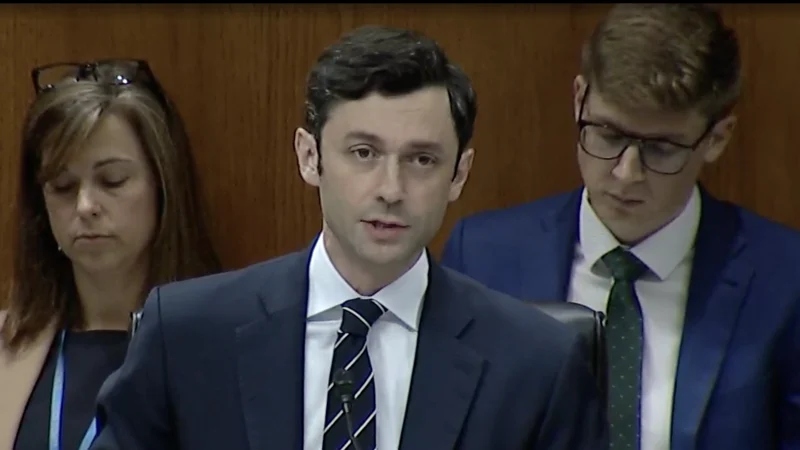The upcoming fiscal year’s proposed military construction and housing budget is large, representing a $1.4 billion increase over the previous year—a substantial request, especially for an area of department appropriations that is known for exceeding project budgets and timelines.
However, it also may be necessary, as heightened scrutiny in recent years has revealed that the quality of military barracks and even some military family housing have fallen short of acceptable standards for years.
A government watchdog report in 2023 uncovered rodent and pest infestations, mold, sewage and plumbing problems, broken windows and locks and inoperable fire safety systems in barracks on many military installations.
The Center Square previously reported that the problems with family housing are generally less widespread, as almost all military family housing construction is contracted out with the private sector, but the Government Accountability Office has also said that oversight of the DOD’s privatized housing program could be improved.
A Senate Appropriations subcommittee questioned relevant Department of Defense leadership about the $18.9 billion budget proposal Tuesday, noting some of the challenges it faces in its review this year.
As in many other recent budget hearings, committee members underscored that they received the proposal late and as a result, are working from only partial information.
“We on the subcommittee look forward to receiving the justification books and related exhibits, which still have not been delivered but are expected later this month,” Subcommittee Chairman Sen. John Boozman, R-Ark., said.
Subcommittee Ranking Member Sen. Jon Ossof, D-Ga., also pointed out that passing funding measures through a budget reconciliation process, which is what is happening now in Congress with the One Big Beautiful Bill, means less congressional oversight of funds.
“First of all, I note with concern that the White House has decided to circumvent the budget process and push $900 million of Milcon funding into the partisan reconciliation measure,” Ossof said.
The regular budget process allows for greater analysis and review of appropriations measures by lawmakers. Budget reconciliation is a fast-track approach to passing high-priority legislation and limits the kind of analysis members of Congress can do and the changes they can make.
Boozman also voiced concern over the amount officials were requesting.
“I’m encouraged to see another year of growth in the Milcon on request, [but] I remain concerned that we’re not necessarily buying more. We’re simply paying more,” Boozman said. “Some of these budget numbers are staggering. Not that long ago, hitting the $100 million dollar mark on a single project was significant. Now it has become routine.”
Military installations are requiring greater levels of technological and weapons sophistication – which is expensive in and of itself – but the challenge is compounded by inflation and other economic pressures, according to Boozman.
“The trajectory is not sustainable, and future budget requests cannot continue absorbing these rising costs,” he added.
In response, the officials testifying before the committee highlighted a dire need for installations to meet the operational demands of the day but also assured committee members that they’re doing everything they can to maximize funding.
“Our installations are under threat, not just from our adversaries, but from aging infrastructure, extreme weather and increasingly complex operational demands. To address these challenges, we’re focusing on an installation resilience approach that focuses squarely on military readiness and operational capacity,” said Dale Marks, assistant secretary of defense for energy, installations and environment.
“This ensures that our resources can directly support what matters most – maintaining ready forces and resilient installations that can operate effectively under any conditions.”
Most of the subcommittee senators’ questions probed into the kind of oversight federal funding would receive from the DOD officials in charge of installations and logistics for each military branch – that they wouldn’t overlook critical projects and allow funds to be directed toward less fundamental needs.
Officials emphasized a commitment to improving troops’ living conditions, despite the number and type of projects that require attention.
“Taking care of our soldiers and their families remains our number one priority, and their well-being is directly linked to the readiness and the ability of the army to accomplish its mission,” said Lt. Gen. David Wilson, deputy chief of staff for U.S. Army installations.
Despite the increase in funding from Congress and the warning from Boozman that such spending is not “sustainable,” officials repeatedly said that substantial funding commitments over a long period of time were what is needed.
“With strong support from Congress, we’re making progress, but this is going to require a sustained effort over a stained period. No one budget year is going to provide enough resources to overcome our existing challenges or eliminate the threats to our installations,” said Lt. Gen. Stephen Sklenka, deputy commandant for Marine Corps installations and logistics.






